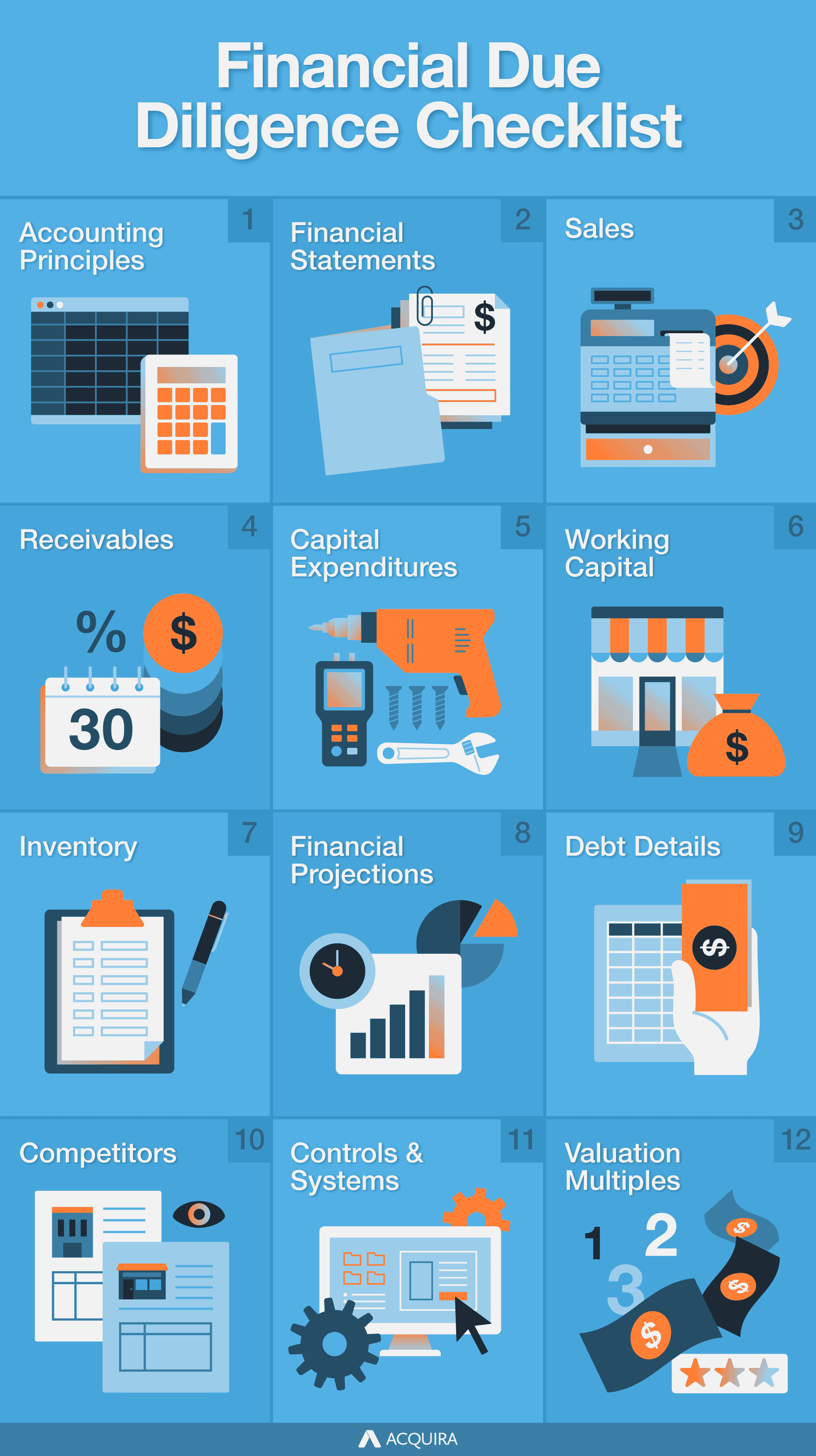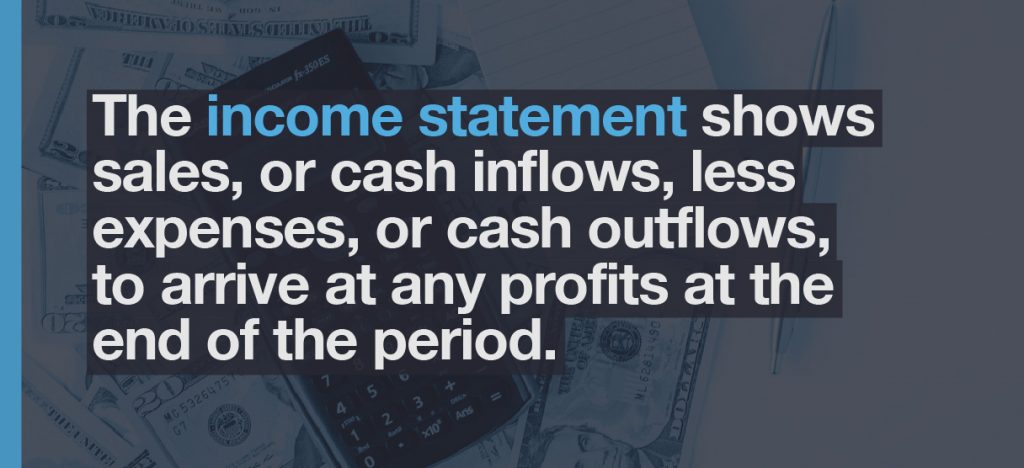- What Is Due Diligence?
- Financial Due Diligence Checklist
- Risks and Consequences Of Not Doing Financial Due Diligence
- Financial Due Diligence Wrap Up
- Main Takeaways
- What financial due diligence is and why you need it.
- What items you should be analyzing when closing a deal.
- Risks and consequences of not doing financial due diligence.
- How long you should spend on financial due diligence.
You just closed a deal and bought your first business. Sales have been humming along for the first two or three weeks, and you’re feeling pretty good.
Suddenly, they start to drift downward for no apparent reason. Upon further inspection, you discover an alarming number of negative customer reviews made previous to your purchase of the business. You realize that customers have been increasingly complaining that the products were becoming outdated and suboptimal and that if you had noticed this earlier, you could have predicted the drop in sales.
Situations like these can be prevented with proper financial due diligence.
Closing a bad deal can usually be avoided, provided that you spend sufficient time upfront looking at the right information.
What Is Due Diligence?
Due diligence has been around for a long time. It became a common practice among securities dealers and brokers with The Securities Act of 1933.
In fact, it was actually included in the Act to serve as a defense for securities dealers if they were targeted with unfair prosecution.
However, financial due diligence is not just an imperative for security brokers. Anyone looking to make an investment, such as purchasing a business, should take the time to perform their own due diligence.
Due diligence is an audit or investigation of the business you are considering. In addition to reviewing financial statements, any interested party should do their best to confirm any stated facts by the seller.
Basically, a prospective buyer performs due diligence to assess the desirability of a business that is being offered for sale and to minimize the risk of unpleasant surprises post-sale.
Financial Due Diligence Checklist
Let’s look at the individual items that comprise financial due diligence.

Accounting Principles
Are the company’s accounts booked on a cash or accrual basis? You will need to determine this before you start looking into the financial statements.
Accrual-based accounting is required when using GAAP (Generally Accepted Accounting Principles). It also may be required by other stakeholders such as creditors (lenders), certain governmental entities, and other investors. Nevertheless, the accrual method of accounting makes it easier to understand what you are looking at when you’re evaluating a company.
Accrual-based accounting requires a business to record revenue when earned and expenses as they are incurred. This is in accordance with the matching principle: expenses should be recognized in the same time period as the revenue they help to generate. Someone using cash-based accounting only records sales or expenses as they receive cash or write the checks for the bills.
One of the problems with cash-based accounting is that a lot of bills are not due for 30 days, so the expense is recorded only when it is paid. Similarly, sales are recorded only when the customer actually pays. And a staff bonus based on the previous year’s sales and paid in January would be booked in the new year rather than matched to the year in which it was earned.
As a result, the distortions of cash-based accounting can result in wild swings in profitability on the books. The company may look less stable than it actually is. With accrual-based accounting, the sale or expense is recorded when it happens.
Financial Statements
Financial statements are probably the most important documents you will look at when performing financial due diligence on a prospective purchase.
You will typically want to ask for income statements (also known as profit and loss statements), balance sheets, and cash flow statements. Make sure you get at a minimum two years of financial statements so that you can make year-over-year comparisons – more years of history are, of course, preferable. A lender like SBA will also want to see the company’s financial statements.
Income Statement/Profit & Loss Statement
The income statement (sometimes called the profit & loss/P&L statement) indicates a business’s profitability for a certain time period. In its most basic form, it simply shows sales, or cash inflows, less expenses, or cash outflows, to arrive at any profits at the end of the period (this is usually one year, but could be monthly or quarterly depending on the reporting period). It may make no distinction between cash and non-cash receipts or expenses.

There are several financial ratios derived from the income statement that reveals a lot about the health of a company.
The first ratio is Gross Margin, which represents how much of a company’s sales revenue it keeps after incurring direct costs associated with producing its goods and services. In other words, gross margin gives you the percentage of sales revenue available for profit or for reinvestment after deducting the cost of goods sold or costs to deliver those sales.
For example, a gross margin of 40% tells you that the company retains 40 cents of every dollar after deducting all costs to deliver that revenue, including direct materials, direct labor, and direct selling costs. You need to be aware that there is potentially an apples-to-apples comparison issue here: some sellers do not include labor in COGS (Cost of Goods Sold). This distorts their gross margin, making it appear above the industry average when, in fact, it is well below.
Other useful ratios derived from the income statement are the Profit Margin (also called Net Profit Margin) and Operating Margin. Sites like investopedia.com explain how to calculate them easily.
The final ratio of critical importance is the Debt Service Coverage Ratio (DSCR), which is Net Operating Income divided by Total Debt Service. SBA loans require a DSCR of 1.15 or greater.
You should be able to find industry benchmarks for these ratios, especially if you have the help of an accountant, and be able to see whether the company you are analyzing is over- or under-performing within the industry. Try to obtain the margins of two or three competitors.
As a rule of thumb, top-performing plumbing and HVAC companies have gross margins of 50% and EBITDA margins of 30% (EBITDA is Earnings Before Interest, Tax, Depreciation, and Amortization). However, EBITDA margins for businesses with 20-50 employees will drop to 15-20% when an extra layer of management has been introduced to encourage growth, but there are not yet enough technicians to be efficient. A technician to manager ratio between 7:1 and 10:1 is considered efficient.
Are there unrealized efficiencies that you could implement or price increases that would be acceptable to clients?
In addition, it’s imperative to calculate the year-over-year change (or quarter-over-quarter change, if the financial statements have this layer of granularity) in the income statement numbers and in the ratios you’ve derived from them. If you’re not happy with the trend, you need to ask questions. Why did a certain expense increase by 125%? How can the business owner explain a drop in sales of 28% for a given product line?
Common sense plays a role when you assess the importance of percentage increases. A 200% increase in an expense that increased from $1,000 to $3,000 a year is less critical than an 80% increase from $10,000 to $18,000.
Reviewing the income statement can show where costs can be reduced or issues to discuss with the owner.
Balance Sheet
The balance sheet is a point-in-time snapshot of what a company owns (its assets) and owes (its liabilities). Assets less liabilities give shareholders’ equity (or, in your case, what is likely called owners’ equity). The balance sheet must always preserve that little equation and therefore be in balance. For example, if the debt is paid off in a given period, the debt liability account is reduced, and the cash asset account is reduced by the same amount.
Remember to look at period-over-period comparisons and inquire about any large increases or decreases. This will give you a sense of trends playing out over a longer period. Hopefully, the company is accumulating retained earnings over time.
If the company has a lot of debt, this is, of course, not a deal-breaker if the sale is an asset sale.
The Cash Flow Statement (CFS)

The cash flow statement summarizes the amount of cash and cash equivalents entering and leaving the business in a given period.
In other words, it shows whether all the revenues booked on the income statement have been collected. It measures a company's ability to pay debts and cover expenses with its cash position. And it shows this more clearly than the income statement does.
For example, the income statement includes items like depreciation expense, which doesn’t have an actual cash flow associated with it. Depreciation simply allocates the cost of an asset over its useful life.
The CFS measures cash flow components from three areas: operating activities, investing activities, and financing activities. Companies using the accrual-based method of accounting need to use the indirect method of cash flow accounting.
Here’s an example of how it works. If a company increases its accounts payable and reduces its accounts receivable period-over-period, non-cash amounts will show under Cash Flow from Operations on the current cash flow statement as:
- “Additions to cash” (eg., depreciation, decrease in accounts receivable, increase in accounts payable)
- “Subtractions from cash” (eg., increase in accounts receivable, increase in inventory).
The three financial statements are interrelated. The net earnings on the statement of income are used to calculate the figures on the CFS, and the net cash flow on the CFS from one year to the next will equal the increase or decrease in cash between the corresponding year-over-year balance sheets.
Sales
Sales are the lifeblood of your business and its raison d’etre. They appear on the income statement, but you will want to investigate them in depth by looking at areas like products and trends.
Products
In your discussions with the owner and with the employees of the business, you need to explore the following areas:
- Where are the sales coming from?
- How many different revenue streams does the company have? How steady is each of those streams over the business cycle, and how adaptable are they to foreseeable technological change?
- Are they relying heavily on just one source of revenue, or are they adequately diversified?
- How would you mitigate the risks if you took over the company?
- Are they neglecting potential sources of revenue that, perhaps, their competitors have been taking advantage of? In other words, can the contribution margin be improved? The contribution margin represents the incremental money generated for each product/unit sold after deducting the variable portion of the business’s costs. For example, one example of low-hanging fruit that will improve contribution margin is using the same labor to do higher-margin work instead of lower-margin work.
Trends
One of the biggest components of financial due diligence involves looking at trends, such as changes in margins and in product sales over time.
Favorable shifts in margins and sales are, of course, a good thing. But a rapid improvement in margins or sales may be a sign you need to investigate. Speak with the seller and try to determine the reason. Is there a way to scale up what they are doing?
Of course, if trends show deterioration over time, you DEFINITELY need to figure out why. The answer might be a deal breaker. At a minimum, you may wish to lower your offer and can show the seller you have grounds to do so.
Still, common sense needs to play a role here. Maybe one or more time-limited factors made the previous year a record year. Or maybe sales are up in the current year but had declined for three years in a row before that and are now edging up from a low base.
Receivables
Diving into the company’s receivables (from the balance sheet) will tell you more about the payment terms established with current customers.
Some items to note:
- How old are the receivables? If some of them have gone beyond 30 days, try to figure out the reason. Does the current owner just not enforce payment terms? Or do some large customers demand longer payment terms?
- What percentage of sales are paid 30 days or more out? If it is high, you might have to increase your working capital budget to provide a financial cushion for the delay in payment.
- Are there delinquent accounts, and can you determine the reason for them? It’s possible the owner could be bad at record keeping. But it does happen that a company inflates sales by creating false invoices – which, of course, will never be paid. Either way, these are potential red flags.
Offering corporate customers 30-day payment terms can help boost sales if they pay on time.
You will need to check with the seller’s customers to ascertain that “material” (significant) balances in accounts receivable correspond to genuine sales. This verification will let you know whether the sales are legitimate and whether the company keeps accurate sales records. Note that you should also ensure that vendors’ sales to the company are in line with contracts with the vendors and are paid in a timely manner.
Capital Expenditures
When you examine the fixed assets of a company, you will not only want to note what they have but how old their equipment is. Did they upgrade their equipment in the last 5 years? Or has it been 20?
Knowing if you will need to make a significant cash expenditure in the next few years should certainly affect the offer price. For example, high mileage on the business’s fleet is often an indicator of large expenditure in the near future.
Part of your financial due diligence will also include validating that equipment maintenance costs – and insurance costs – are in line with expectations and contract terms.
Working Capital
Working capital, also called net working capital, is simply current assets minus current liabilities. Current assets can include cash, accounts receivable, and inventories, both raw materials and finished goods. The current liabilities include items like accounts payable, salaries, taxes payable, and the portion of long-term debt that will fall due within one year. “Current” here means that assets will be available, and liabilities will fall due within twelve months,
Working capital gives a measure of a company’s liquidity, operational efficiency, and short-term financial health.
While positive working capital is essential, high working capital is not: a high level may suggest that the company keeps too much inventory or is failing to invest its excess cash. Low or negative working capital may well indicate that the company risks distress or default in the near future. However, sometimes low working capital is an indicator of an expansion in production or into new markets. A discussion with the owner is needed to find out the reasons.
Analyzing working capital is also important because it is such a huge lever in determining the offer amount. You should look at the following factors:
- Has the working capital been swept? (Sweeping refers to using excess cash to pay off accounts receivable/accounts payable earlier than scheduled.)
- Is the seller retaining accounts receivable and their associated accounts payable in the sale?
- Can the buyer ask the seller to hold a specific amount of working capital as a condition of sale? If a buyer asks the seller to hold a certain amount – say $300,000 – in the bank account as working capital without changing the purchase price, this effectively reduces it. However, the $300K reduction is not explicitly incorporated in the EBITDA multiple the seller is requiring. In this way, the purchaser receives a deduction in the purchase price, while the vendor can be satisfied that they obtained the desired multiple.
When you are looking at working capital, remember, as always, to look at its trend over time.
Inventory
Inventory is classified as a current asset on the company’s balance sheet. There are three types: raw materials, work in progress, and finished goods.
You’ll need to familiarize yourself with how the company you are looking at values its inventory. There are three methods that are used in high-volume and non-specific types of inventory: First In, First Out (FIFO), Last In, First Out (LIFO), and Weighted Average. But a car dealership, for example, would not use any of these three to value its inventory: they would use a method called “specific identification” because of the uniqueness of each inventory asset. A site like investopedia.com does a good job of explaining how these methods work.
Investors and analysts use a business’s inventory turnover to calculate how many times it sells its products over a given period of time, such as a year. An optimal turnover of inventory is a primary source of revenue generation.
The optimal turnover of inventory is the sweet spot where the goods needed for the company’s business arrive or are manufactured on an as-needed basis without the company sacrificing its agility in responding to customers’ demands. In many respects, the less inventory held, the better: too much inventory ties up cash, risks obsolescence, and incurs storage costs. But too little inventory means the company may lose market share because it doesn’t have the required inputs from inventory on hand when orders come in.
When you are looking at inventory, get a breakdown of the details of each item. Ask when the business last did a physical count. Physical counts are typically done quarterly or annually. However, some companies use perpetual inventory accounting systems, which transfer inventory to the accounting category cost of goods sold without performing an actual physical count.
Financial Projections (The Owner’s Look at the Future)

“Financial projections” refers to the process the owner of the business that you’re vetting went through to determine their expectations of future results. Commonly, projections were made by the owner in the past for future sales, and it’s useful to see how those projections stacked up with the benefit of hindsight.
If the owner wasn’t even close in their expectations, ask them what caused the discrepancy. What assumptions did they make to arrive at the projections? Why did these assumptions fall short?
You should ask the owner to make projections for the future as well, to see where they think the business and its market are headed. But remember to be cautious in interpreting what they tell you, as they may err on the side of optimism – whether intentionally or not – to facilitate the sale.
Some owners may even have multiple quarterly or annual projections or projections by product line.
You should consider, too, creating your own version of pro forma financial statements (especially the income statement). Pro forma financial statements are forecasts for future periods based on assumptions or hypothetical data. Here you would incorporate ideas you have for streamlining and growing the business. Remember that your ideas are likely to increase expenses for the first twelve months after the close.
The work you have done in your due diligence to this point should give you the information to decide if you agree with the owner’s projections. If you disagree, how much work on your part will be required to reach them?
Debt Details
In an asset sale, you will not be inheriting the company’s debt, but you can still gain valuable insight from looking at it. And not all acquisitions are asset sale transactions. A considerable part of the sales involves the purchase of “stock” or “membership interest” along with the liabilities connected to the business by the buyer..
Has debt been increasing or decreasing? If it’s been going up, was the increase due to additional investment in fixed assets or by supplementing working capital when it was running short? The latter could be a red flag, or it could just reveal that the owner is bad at managing money.
Either way, it’s useful to look at current debt and ask how it got there.
Competitors

Finding quality information on competitors of the business you’re looking at may not be easy. Nevertheless, it is something we highly recommend. The task may be easier if you’re using a locally-based accountant.
If you can source financial information for 2-3 competitors, you’ll be able to determine where the business you’re looking at fits into its market. Where possible, compare the competitors’ sales, margins, earnings, and other financial items to those of your business.
And perform a SWOT analysis – strengths, weaknesses, opportunities, and threats – for the competitors. How do they stand up against your SWOT analysis for the business you’re thinking of buying? And how can you take advantage of or mitigate the competitors’ SWOT results? Are there aspects that pose a direct threat to your business?
Try to get information on market share: of the competitors, of the industry as a whole in your geographic region, and of the business you are investigating.
Controls & Systems
Financial controls and systems are vital to any business that has ambitions to scale. Once you have bought a business, you will need to be able to rely on the employees in place as well as those you hire. So you must be confident that they will follow the procedure and do not have the opportunity to take advantage of you.
Are the controls in place adequate? Are they as efficient and effective as they should be, given the current size of the business and the scaling up that you want to do? In fact, are there any controls at all? Your investigation will give you an idea of how much systematization you’ll need to do if you buy the business. It will also give you a better understanding of current business processes and overall operations.
The controls and systems in the business will also reveal how reliable the information they are showing you is. For example, are there systems to make sure all sales and expense items are recorded properly and in a timely manner? Are there controls to ensure that statutory remittances and government reports on them are filed on time? Keep in mind that government penalties for late filing are draconian. You should spot-check to verify that transactions for bank deposits, payment processing, and payroll are accurate.
What kind of accounting software does the business use? Are its records backed up and stored securely with strong passwords? Are passwords on a strict need-to-know basis?
It’s likely that smaller businesses will have fewer or weaker controls. But you still need to identify areas of potential risk to determine the need for additional controls.
Valuation Multiples
Up to this point, the objective of your due diligence is to help you decide if you’re interested in purchasing the business. If so, you have to determine the amount of the offer.
When establishing the multiple of earnings that you consider appropriate for your valuation, make sure that you’ve considered all the factors discussed in this section. Also, be aware that the SBA looks at the average of the last three years’ earnings when underwriting. This means that businesses with a high growth rate will not be approved for high-leverage loans since the Debt Service Coverage Ratio calculation uses a weighted average of the previous three years’ EBITDA.
It’s probable you’ll be offering anywhere from 2-7 times earnings for the last 12 months. Where the figure you present to the vendor falls in that range will depend on the result of your findings and the industry the business is in. Also, it will depend on your required rate of return in order for you to earn enough of a return on your capital and that of any partners while maintaining your ability to cover payments to potential debt holders.
Remember that the key in determining what you should pay should be driven by the realistic forecast of future cash flows that you have developed during the due diligence process and not simply a market multiple.
Earnings
Businesses with higher cash flow tend to sell for higher multiples. Investors are fine with paying more for healthy cash flow as it provides a cushion against any drop in earnings sufficient to destroy their investment.
Operating History
A company that has a history of steady income for 10 years is probably worth more than one that has been a steady earner – or just in the black – for a couple of years.
Comparables
If your business is in a hot industry that has had several players with well-documented exits, the owner may be expecting the same multiplier as the businesses which were sold. You should expect an uphill battle if you offer a lower multiple.
Effectiveness of Controls and Systems
The more comprehensive the controls and systems already in place, the more hands-off the current owner will be. How many hours are they putting in each week? The closer the business is to passive income, the higher the multiple the owner can command.
Goodwill
The owner’s brand may command respect and trust and, therefore, may be sought out by clients in the business’s region. Intangible assets like this are real enough, although their exact value will be subjective in the owner’s mind. You’ll have to decide if the owner’s estimate of goodwill is worth the price and be prepared to go back and forth with the owner on the asking price. One indicator may be higher gross margins than the industry average that are driven by increasing sales.
Risks and Consequences Of Not Doing Financial Due Diligence
To put it baldly: you could lose all your money.
Anyone looking to purchase a business wants to buy at the lowest possible price and, ultimately, sell at the highest. But that’s not always the reality.
You cannot afford to neglect due diligence. Although it is impossible to uncover everything you might have wanted to know, you can certainly proceed with your deal with much more confidence after a thorough and informed look at it.
Where you uncover shortcomings, you’ll have to determine whether the owner is simply bad at bookkeeping or deliberately hiding something that affects the valuation. Are the products – or the business itself – in need of a major overhaul? In the latter case, what can be salvaged that makes it still worth your while to purchase the business? And what kind of leverage do these shortcomings give you in negotiating?
Bear in mind too, that if the owner’s financial records are scanty – perhaps just covering the last year or two of operations – you are in a better negotiating position than if there is more comprehensive recordkeeping. You can argue that the lack of financial records handicaps your ability to correctly value the business.
Financial Due Diligence Wrap-Up
Thorough due diligence serves as an inoculation against buyer’s remorse.
It’s one area that we never rush when evaluating new businesses for purchase. It is not uncommon for the process to take 2-3 months. Look at everything, and be tireless about asking questions.
If you don’t feel comfortable overseeing this process by yourself, we can help. Schedule a call with an Acquira representative through the form below.
It can be exciting to imagine closing a deal. As you get closer, you might have a tendency to be OK with some red flags. Be aware of the risks of getting too invested, and work on remaining objective throughout the process. If you are looking for a full roadmap to buying a business, check out our latest guide for help.
Main Takeaways
- Financial due diligence is one of the most important aspects of an acquisition.
- Don't be afraid to take your time.
- It's normal to ask for all the items listed above.
- Ask questions.
- Analyze the deal you're looking at, but also do some analysis on competitors.
Acquira specializes in seamless business succession and acquisition. We guide entrepreneurs in acquiring businesses and investing in their growth and success. Our focus is on creating a lasting, positive impact for owners, employees, and the community through each transition.



